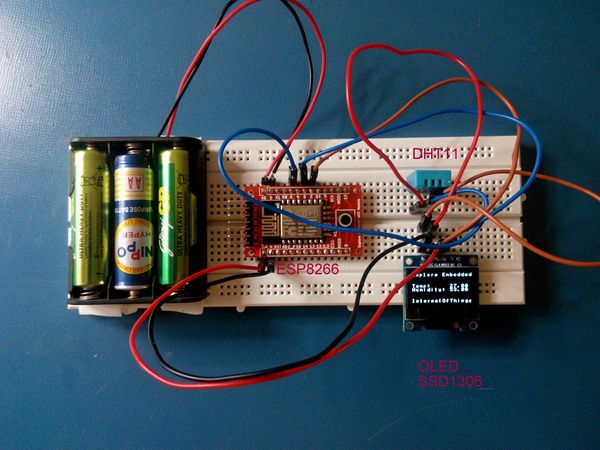Difference between revisions of "A simple IOT demo with Explore ESP8266"
| Line 1: | Line 1: | ||
[[User:Sandeep|Sandeep]] ([[User talk:Sandeep|talk]]) 16:49, 27 August 2015 (IST) | [[User:Sandeep|Sandeep]] ([[User talk:Sandeep|talk]]) 16:49, 27 August 2015 (IST) | ||
---- | ---- | ||
| − | |||
We were invited today to give a seminar on "How to get started with Embedded Systems" in a local Engineering college. With very little time on hand, wanted to quickly show the capabilities of ESP8266. So I decided to make a temperature humidity logger. With [https://thingspeak.com/channels/53608/private_show Thingspeak.com], it was extremely easy to log data and even trigger tweets! | We were invited today to give a seminar on "How to get started with Embedded Systems" in a local Engineering college. With very little time on hand, wanted to quickly show the capabilities of ESP8266. So I decided to make a temperature humidity logger. With [https://thingspeak.com/channels/53608/private_show Thingspeak.com], it was extremely easy to log data and even trigger tweets! | ||
| + | [[File:IoT logger.jpeg|600px|center]] | ||
| + | |||
==Components/Boards Used== | ==Components/Boards Used== | ||
Revision as of 16:40, 28 August 2015
Sandeep (talk) 16:49, 27 August 2015 (IST)
We were invited today to give a seminar on "How to get started with Embedded Systems" in a local Engineering college. With very little time on hand, wanted to quickly show the capabilities of ESP8266. So I decided to make a temperature humidity logger. With Thingspeak.com, it was extremely easy to log data and even trigger tweets!
Components/Boards Used
| 1 | Explore ESP8266 Wi-Fi Module | 
|
| 2 | OLED Display Module 128X64 | 
|
| 3 | DHT11 | Temperature and Humidity Sensor |
Arduino code for ESP8266
References and Credits

